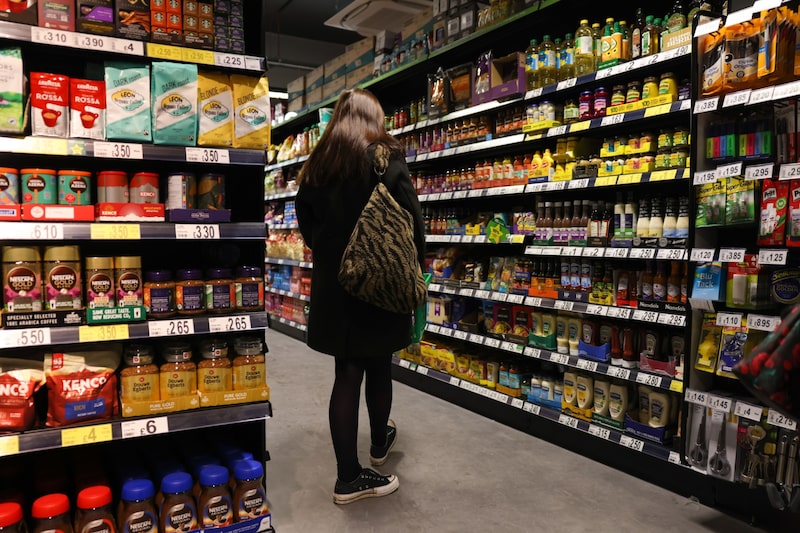Bloomberg Línea — This year will be remembered as one in which dozens of countries in which people had forgotten the meaning of the word inflation once again experienced moments of nervousness due to the generalized rise in prices.
In Latin America, after having reached peaks not seen for several years, November’s figures show that inflation is beginning to cool, in most countries, albeit unevenly.
Looking at what is happening in some of the main economies of the region, we can see that:
- In Brazil, the consumer price index (CPI) hit 12.13% year-on-year in April (the highest in 27 years), and from there it began to fall. In November it stood at 5.9% year-on-year.
- Mexico, meanwhile, saw CPI of 8.7% in August, the highest figure in 22 years. In recent months it began to fall however, and in November closed at 7.8%.
- In Chile, the situation shows ups and downs. In August inflation was at 14.1% year-on-year, the highest level in 30 years, but which then began to fall and stood at 12.8% in October, although in November the CPI surprised everyone and rebounded to 13.3%. Nevertheless, all market analysts agree that inflationary deceleration in Chile is on track and that it will converge to a range close to 5% in December of next year. To achieve this, however, the Central Bank admits that it will sacrifice economic growth.
- In Colombia, the upward path has not yet ended, and inflation was 12.53% year-on-year in November, the highest value in 23 years
Which countries have the most complicated inflationary outlook?
Although several countries in the region suffered from price increases due to the mega-issuance of money and the high cost of raw materials due to Russia’s invasion of Ukraine, most Latin American countries went through the situation without experiencing the turmoil of the 1980s or 1990s, when it was common for some of the regions nations to see three- or even four-digit inflation.
However, there are three countries that have seen price increases that are eye-watering for consumers.
One of them is Venezuela, which although it left behind four years of hyperinflation in 2021, is still among the countries with the most runaway price increases in the world.
According to the Venezuelan Financial Observatory, a private entity that carries out measurements independently from the central bank, prices rose 21.9% monthly in November and the year-on-year increase reached 213%.
In 2021, Venezuela had ended the year with an inflation rate of 686.4%.
Another country that has been suffering the onslaught of inflation is Argentina, where the latest inter-annual measurement showed a CPI of 92.4%, the highest since 1992. And although that figure is very high, the Argentine government is breathing a sigh of relief as the monthly value started to decrease: Argentina had not achieved inflation below 5% in the month since February, but in November the index showed a price increase of 4.9%.
However, it remains to be seen how sustainable this slowdown is, since it was reached on the basis of a temporary price agreement. Argentina’s Economy Ministry assures that it is lowering the fiscal deficit to give free rein to the inflationary downturn.
Cuba also has high inflation, although reliable figures are more difficult to obtain. One way of approximating what is happening is the so-called “Hanke index”, which shows that prices in Cuba had risen 152% year-on-year as of December 12.
Economist Steve Hanke, of Johns Hopkins University, publishes an inflation ranking of his own, for which he considers the annual inflation implicit in the purchasing power parity that arises from the free exchange rate and the black market. This index cannot be compared with the CPI of the countries, but, at least, it gives an approximation of the problem.
The countries with the lowest inflation in the region
There are three Latin American countries whose inflation rates are among the lowest in the world:
- Panama, whose year-on-year inflation as of November stood at 1.5%.
- Bolivia, with year-on-year inflation in the eleventh month of the year at 3.17%.
- And Ecuador, where prices rose 3.64% in the last twelve months.
Inflation in the rest of Latin America
This is how inflation moved in November in the rest of the Latin American countries:
- In Nicaragua, the November CPI stood at 11.38% y-o-y (it had reached 12.16% in October).
- The inter-annual CPI for November in Honduras was 10.44% (the maximum in 2022 was in July, when it reached 10.86%).
- In Guatemala, inflation for the last 12 months was 9.17% (the maximum this year was 9.7% in October).
- Uruguay had negative monthly inflation in November (-0.28%) and interannual inflation reached 8.46% (it had reached 9.9% in September).
- Peru’s inflation reached 8.45% y-o-y in November. The peak was 8.81% in June. Nonetheless, November’s inflation marks a rebound with respect to October (8.28%).
- In Paraguay, year-on-year inflation stood at 8.3% in November. The 11.8% recorded in April, which was the highest this year, seems to be behind.
- Costa Rica closed November with a year-on-year inflation rate of 8.26%. It is moving further and further away from the 12.13% reached in August.
- El Salvador’s inter-annual inflation is 7.32%, based on November data. This year’s maximum was reached in June, when the CPI registered 7.76% inter-annual inflation.




